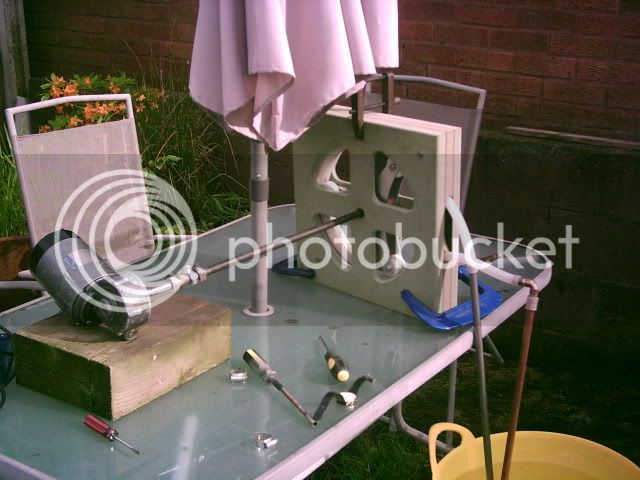Yorg....the mk1 has 1/2" pipe on a wall that is 160 mm radius. The construction leaves a bit to be desired, but once primed it will run between 0.55 litres pm (0.5 us pint) at 8 rpm to the max I have run it at so far that was of the order of 120 rpm and 4 usgpm. I have just had it pump vertically up a 15 ft length of 1/2" stainless tube with no problems at 105 rpm, so that is quite a big flow range.
My main concerns at the moment are how it will perform when asked to pump hot liquids, (as that is what it is going to be dealing with, even though it can be placed after the cooler during boiler to fermenter operations, it will still see mash temps in my rims) and how the tube will stand up to the rollers giving it a constant hammering....
I cannot really test the tube longevity in the mk1 setup, as the MDF crap it is made from gives off a lot of wood and glue dust that settles on the outside of the pipe, so it would not be a fair test until it is made from something nicer like nylon and is constructed in such a way as the tube and walls etc are sealed from outside contaminants.
That said, I have it set up to run at a constant 46 rpm, (that will give 4.6 litres per min.) and over the next week I will be running it all the time I am at home, to give it the nearest I can to a continuous test. So far it has run for a couple of hours at that speed setting.
When I get a free weekend, I will set up a similar test, but at high temperatures.
The Mk 2 is taking shape, and might be a single wheel, running in a 3" length of 1/4" wall thickness alloy tube of about half the size of the Mk 1. I saw a whole bunch of alloy tube remnants when I went and bought a length of stainless 1/2" tube last Friday, so I will be buying a bit of something suitable as soon as I can. I have bought three conveyor wheels from RS, item no 2352224 ...... that has good solid ball races and is 2" wide, 1 7/8" dia and runs on a 15 mm shaft.
http://uk.rs-online.com/web/search/...od=searchProducts&searchTerm=2352224&x=15&y=8
Having my lathe run the pump is a brilliant idea.....I have fitted a potentiometer into the lathes existing drive electronics that gives zero to max revs in whatever gear setting I put the lathe in. From outside the shed, on a brewing day, the potentiometer is a pump control knob, and from inside it gives the lathe infinite speed control when used as a boring old lathe (Pun intended)
I have taken pictures and a video, and will post them when I get a bit of time and also work out how it is done!!








